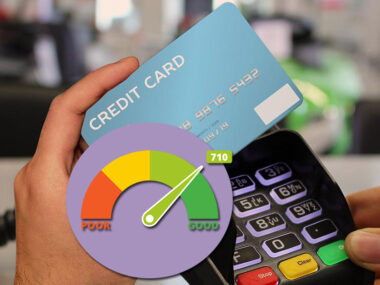If you have a credit score of 678, you have good credit. Literally so, in fact.
According to the FICO credit scoring model, a credit score of 678 officially falls in the lower end of the “Good” credit score range. While this sounds great on the surface, the truth is, the Good range is just the third of five possible ranges, which are:
- Very Poor: 300 to 579.
- Fair: 580 to 669.
- Good: 670 to 739.
- Very Good: 740 to 799.
- Exceptional: 800 to 850.
A score of 678 doesn’t just fall short of the “Very Good” and “Exceptional” ranges. It is also on the lower end of the Good range, as well. This doesn’t change the fact that you have good credit. However, it does make it very easy for you to slide back into the “Fair” range, which is a highly undesirable event.
Rather than resting on your achievement, you should use your score of 678 as a springboard to launch even higher into the world of good credit.
Table of Contents
Why Your Credit Score Is 678
If you want to continue to have good credit, it’s important that you take some time to understand what factors have led to your score of 678. What positive and negative behaviors in your financial life have added up to a score that is in this range of “good but not great?”
Here are several of the most common factors that help to make up a credit score. Consider how each one has uniquely impacted your score for better or for worse.
Your Credit Utilization Ratio and Total Debt
There are two critical components of credit: revolving credit and non-revolving credit.
Revolving credit consists of open lines of credit that you borrow from and pay off regularly. The amount of revolving credit that you’ve borrowed divided by your total amount of available credit is your credit utilization ratio.
In other words, if you have a credit card with a $1,000 limit and you’ve borrowed $500, your credit utilization ratio for that account is 50%. If your accounts collectively begin to trend above a ratio of 30%, it can harm your credit score.
Additionally, your total debt shouldn’t get too high, either. This is in reference to your non-revolving credit. These are single-time loans, such as student loans or a mortgage, which you pay back in installments.
If you have too much debt of this nature, it can begin to make potential lenders a bit leery about loaning you even more money. Too much non-revolving debt can also reduce your credit score.
Your Payment History and Derogatory Marks
Your ability or inability to make payments on your various loans and lines of credit is the number one biggest factor in calculating your credit score. It accounts for more than a third of the entire score. Making payments on time can do wonders in boosting your score.
However, failing to make payments will result in a derogatory mark on your credit report. This will drag down your score and can come from a variety of different events.
Missed payments, collection agency claims, repossessions, foreclosures, and even bankruptcy will leave black marks on your credit reports for several years at a time.
When this happens, it’s important that you resolve the issue to the best of your ability and then send a goodwill letter to the lender asking them to remove the mark.
Sometimes you can also have a mark on your report for a hard inquiry. This is simply from a lender checking your credit report before loaning you money. While this can reduce your score somewhat, it is very normal and should only last for the better part of a year.
Your Credit Mix and Average Age
The variety of your forms of credit is also a very important part of your score. On the one hand, if you only have one or two kinds of credit, it can hurt your score. On the other hand, showing that you can successfully handle several different forms of credit at the same time can boost it.
The average age of all of your credit is worth consideration, too. If you are young or you’ve recently opened up a new account, the average age of your credit will be lower, as will your credit score.
As you work through the above list, make notes of your strengths and weaknesses. This can help you craft an effective financial plan to boost your credit score in the future.
What Can You Do With a 678 Credit Score?
A 678 credit score may not be ideal, but it still means you officially have Good credit. This opens up a world of new financial activity that is difficult — if not impossible — to access for those with Fair and Very Poor credit. For instance, with good credit you can:
- Be approved for a loan more easily;
- Expect better loan terms and have greater negotiating power with lenders;
- Get higher credit limits;
- Enjoy lower interest rates;
- Have better options for refinancing an existing loan;
- Pass credit checks by landlords for an apartment and employers for a job;
- Gain access to some (though not all) credit card rewards.
While you officially gain access to this bevy of financial advantages with a score of 678, your proximity to the Fair range is still a concern. In addition, if you can boost your score into the Very Good and Exceptional ranges, many of these benefits become more advantageous.
How to Improve a 678 Credit Score
If you have a credit score of 678, you can rest in the fact that you’re working from a financial position of strength. You aren’t repairing or fixing broken credit. However, you don’t have stellar credit yet, either. To build on your current success, look for various ways to improve your credit score, such as:
- Genuinely building, updating, and sticking to a budget;
- Reviewing your credit report for errors and derogatory marks every year;
- Paying off revolving debt every month and paying down as much non-revolving debt as possible;
- Working with a credit repair company if you have negative marks on your credit report that shouldn’t be there.
Many of these financial habits and activities won’t change your score overnight. Nevertheless, if you can implement them patiently, you should begin to see your score rise over time.
Image Source: https://depositphotos.com/





